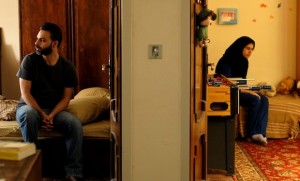In a land where, acting is categorized as a decadent cultural practice; actors are forced to unreasonable conformity and women actors follow the Islamist edict of maintaining the stringent code of conduct; it is indeed commendable to create cinema which portrays real Iran.

Iran as a nation has frequently witnessed movements related to women rights. Cinema seems to be a practice; especially a respite to the prevalent rules that demarcate women’s existence. If we observe; the recent times have made cinema a yardstick to measure the social, political, cultural and economical progress in Iran. The filmmakers through their innovative depiction and portrayal of realism in an innocuous manner have made their voices heard, and also at the same time kept the moral watchdogs at bay.
Women characters on screen are evidently entangled between the intertwining state regulations and socio-cultural limitations. If we look at the history of women actors in Iran; theirs is the most deplorable position. The societal norms albeit stern and contentious; filmmakers are driven more by a strong passion, to make cinema a medium to voice their apprehensions in the muddled state.
Even today, the appearance of uncovered women on screen is strictly forbidden. A woman’s interaction with men other than husband, father, brother and son is not allowed. Under this overbearing religious dogma, making a full length cinema featuring women is a difficult job. The filmmakers’ skills lie in following a non-confrontational narrative style of expression. Female characters were however bound by the persisting religious and social demands. Their characters are restricted to secondary roles. Even through the secondary characters; mainly that of mothers, sisters and wives and women, they were unable to depict their part realistically, owing to decree that limit their interaction with the opposite sex. Even the slightest idea of suggestive sexual attraction was considered decadent and threatening; and hence got omitted in most of the cases.
A Separation by Asghar Farhadi has garnered rave reviews across the globe. The film portraying predicament of a middle class Iranian family on the verge of annulment has won many an accolade and recognition from critics and viewers alike. The latest achievement to the films credit is the Academy Award for Best Foreign Language Film 2012.
The film is a representation of conflicts between hope and dismay that clouds lives of the lead characters. It begins with a discord in marital life of two young middle class Iranians, Nader and Simin and is set against the backdrop of a stark imagery of the current social, economical, and cultural scenario of Iran.
Simin wishes to shift from Iran for the well-being of her family, and hence provide a bright future to her 12 year old daughter Teremeh. Her husband, Nader, disapproves of the idea owing to the degenerating condition of his aging father afflicted by Alzheimers. Eventually, the couple call off the marriage, leaving the daughter’s life in a disjointed situation.
A Separation implicitly depicts the abject realities of life. The gulf that divides the privileged and the underprivileged is shown in the light of a disagreement. Simin while leaving her husband’s home hires a home maid, Razieh who is 3 months pregnant, to take care of her husband’s home, which also has his ailing father, and their daughter. On Razieh’s first day at Nader’s house; she is duty-bound to clean the old man who urinated in his pants. Before cleaning the old man, Razieh – perplexed and apprehensive, like any other woman would have been in her position; calls up a cleric, to confirm whether if it was unlawful of her to clean a “na-mahram”(a man other than, husband, brother, father and son).

This particular scene evokes the moral dilemma during the time of adversity; the film has several scenes, where we come across the confrontation between the two impossible choices – between religious ethics and humanism. As the film progresses, a certain unpleasant event compels Nader to push the home maid out of the house, causing an injury that results in an abortion. This results in a chain of events. The film is an intense narrative, which needs the viewers full focus to decipher the intricacies that this (if I may call it) thriller poses.
The major themes in the film are family loyalty, religion, economical inequality, migration, class division, and troubled-relations. The film also in a way satirizes the much debated “veiling of women”. It subtly evokes the irrationality behind the dress code, and this is pretty evident when the protagonist claims his ignorance to the fact that the home maid was pregnant, and this he attributes to the chador(fabric to cover the body, similar to purdah), which makes it difficult to determine the physical traits of a pregnant woman. The Koran is a re-occurring aspect, as the victim of the crime is a deeply religious woman, who experiences a conflict between moral imperatives at various junctures in the film.

Farhadi’s A Separation, doesn’t boast of technical brilliance or a phenomenal cinematography, as most of the film seems to be shot employing hand-held cameras. The shaky shots actually add to the mystifying effect that this intense film exudes. The entire ensemble of actors have been exceptionally gifted when it came to depicting their complex yet realistic characters with ease and utmost conviction.
My rating: 3.5/5
PS: *The introduction is the result of my extensive reading about Iran and this is my first Iranian film. Gratitude to my MA program, I am glad that they prescribed Reading Lolita in Tehran by Azar Nafisi, as it has made me perceptive to women centric issues.



